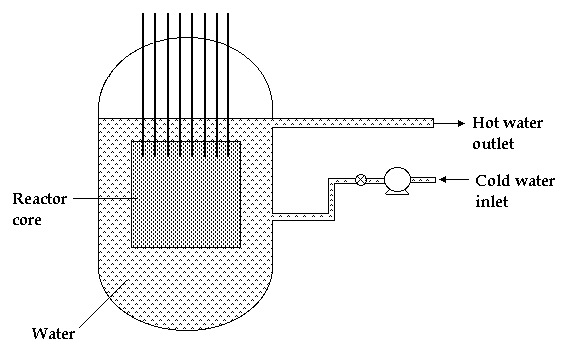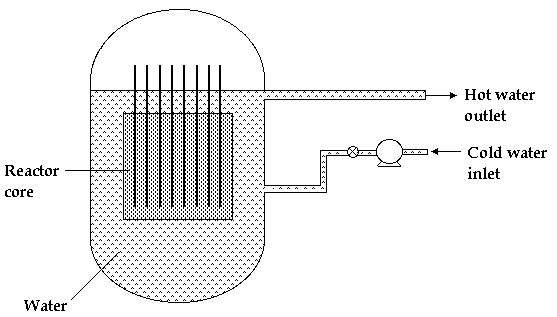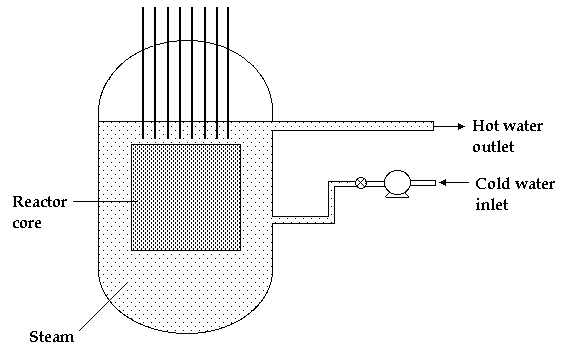
This accident did not occur during normal operation of the reactor. It occurred during a planned experiment that got out of control. The reactor got out of control primarily because of operator errors and negligence (or over-confidence) but also because of faulty reactor design. In addition to being somewhat more prone to chain reaction runaway (compared to most other reactors elsewhere in the world), the containment building of this water-cooled, graphite-moderated reactor, instead of being made of thick concrete, had a roof that collapsed as a consequence of the steam explosion in the core. Let's use here the same simplified picture of the reactor that we used to explain what happened at Three Mile Island. We show only the components directly involved in the cause of the accident.

During a scheduled shutdown of the reactor, the operators wanted to perform an experiment. Ironically, the experiment was meant to establish how the power plant would respond in the case of a minor accident. The target of the experiment was to bring down the reactor power output to about 25% of the maximum output. This is done by inserting the control rods into the reactor core. (Think of the control rods as being roughly equivalent to the accelerator pedal in a car. If the pedal is pressed all the way to the floor, you have maximum power; this corresponds to control rods being witdrawn from the core. If the pedal is released completely, the car will eventually stop; this corresponds to control rods being completely inserted into the core.) The problem was that they overdid this insertion, and the power dropped all the way down to about 1% of the maximum.

In attempting to get back to the planned 25% output, by withdrawing the control rods, the operators got impatient. They disabled most of the automatic safety features and withdrew the control rods to a much greater extent than allowed. This is when the runaway reaction occurred, the water evaporated and the core melted completely. This was not quite the embodiment of the 'China syndrome' but the analogy illustrates the seriousness of the accident. Months later, when the clean-up crew was able to get close to the reactor, they found that it was empty. The resolidified fuel, mixed with sand (which served as a protective layer around the reactor), was later found in the basement of the containment building. It was indeed on its way to the other side of the globe. Until the Chernobyl accident, the nuclear industry considered such damage to be almost impossible.

The tremendous pressure buildup resulted in steam explosion. The roof of the containment building was not able to withstand this explosion. It collapsed. So the radioactive debris got into the air surrounding the plant and was carried by the wind throughout Europe. (The first reports about the acccident came from Sweden!?) The graphite moderator caught fire and the entire building was badly damaged. Dozens of people died from radiation exposure in the minutes and days after the accident, and as many as tens of thousands (among the nearby population or among those involved in the clean-up) will eventually die, or have already died, from cancer caused by exposure to radiation.